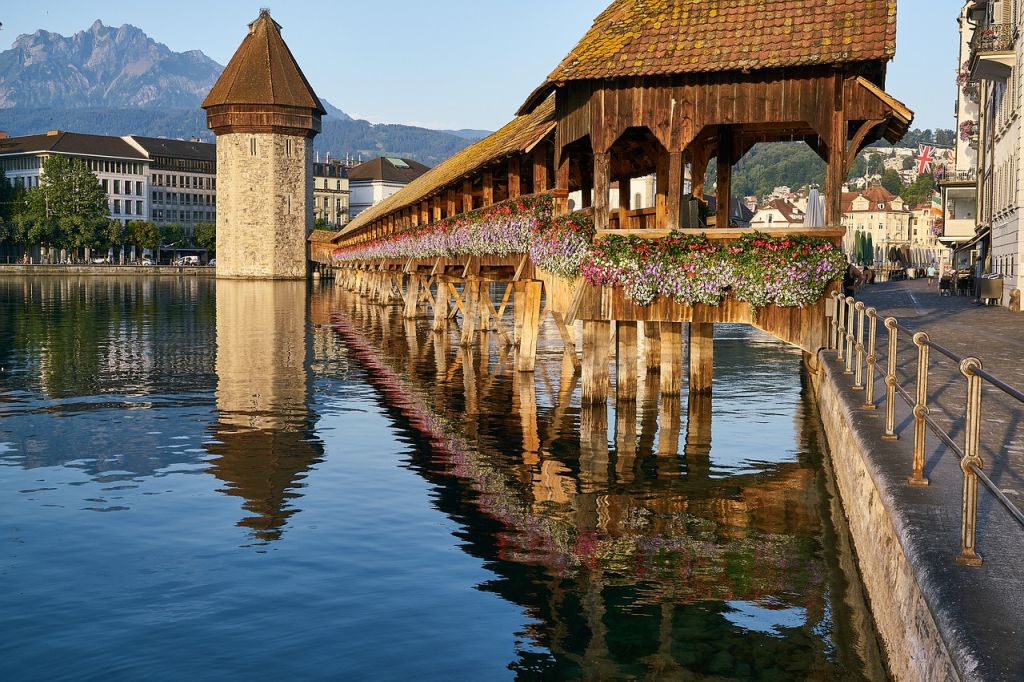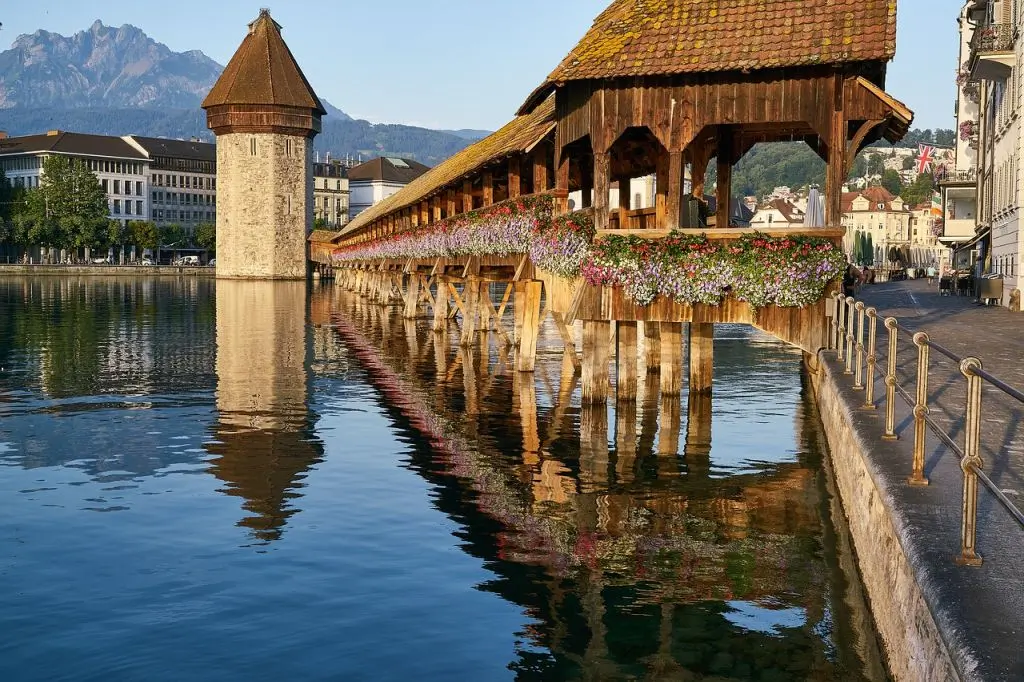Chapel Bridge, Kapellbrücke
Address
Kapellbrücke, 6002 Luzern, Switzerland
GPS
47.0519062, 8.3077925696515
The Kapellbrücke (literally, Chapel Bridge) is a covered wooden footbridge in Lucerne, Switzerland, that spans the Reuss River diagonally. The bridge, named after the nearby St. Peter’s Chapel, is unusual in that it contains a number of interior paintings dating back to the 17th century, but several of them, along with a significant portion of the centuries-old bridge, were destroyed in a 1993 fire.
The Kapellbrücke, which has since been rebuilt, is Europe’s oldest wooden covered bridge and the world’s oldest surviving truss bridge. It is the city’s emblem and one of Switzerland’s most popular tourist destinations.

The spectacular cycle of pictures used to decorate the bridge are just as important as the structure itself, providing the vital nuance to the bridge’s personality. The concept for the pictorial decoration was developed by Renward Cysat (1545-1614), the town clerk of Lucerne, after he spent years researching early Swiss and Christian history.
The bridge was meant to portray the story of the miraculous destiny that inspired the actions of the old Confederates. Given the impossibility of using public monies, it was necessary to solicit donations from the wealthy. Cysat completed his plans in 1611, and construction started soon after. The first successful restoration of the paintings occurred in 1646.
As early as 1726, an overseer was stationed at the bridge to prevent further vandalism of the artwork by local youth. Out of the total of 158 photographs taken before to the 1993 fire, 147 were saved. Some 110 of these were lost in the bridge fire, with an estimated 66 percent of them being either fully destroyed or severely damaged.
The water tower
The water tower, which stands proudly before the Chapel Bridge, was constructed between 1290 and 1300. The water tower’s distinctive shape is the result of a floor design in the shape of an octagon with sides of between 4.4 and 5 metres in length.
 The tower measures 39 metres in diameter and 34.5 metres in height. The tower’s multi-purpose use spans its entire 700-year history. He provided a vantage point for watching boats on Lake Lucerne. It was part of the city’s seaside defences alongside the Hofbrücke and the Kapellbrücke. Since the 14th century, the tower has served as a repository on multiple occasions.
The tower measures 39 metres in diameter and 34.5 metres in height. The tower’s multi-purpose use spans its entire 700-year history. He provided a vantage point for watching boats on Lake Lucerne. It was part of the city’s seaside defences alongside the Hofbrücke and the Kapellbrücke. Since the 14th century, the tower has served as a repository on multiple occasions.
The city archives remained in the tower until 1919, when they were ultimately relocated. In the present day tower room once stood the state treasury and war booty. The tower was used as a jail until the end of the 18th century. After serving their time, the inmates were hoisted back up the rope that had been used to lower them into the dungeon. The artillery club’s massive arsenal may be found in the armoury directly above the dungeon.





